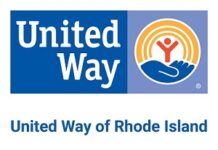Erin McDonough is the program director for the Rhode Island Disaster Medical Assistance Team’s Medical Reserve Corps. RIDMAT/MRC is a nonprofit organization dedicated to recruiting and training medical health professional volunteers to prepare for and respond to public health and emergency disasters across the state, enhancing Rhode Island’s capacity to respond.
In 2013, in response to the overwhelming overdose epidemic facing Rhode Island, RIDMAT/MRC began the Naloxone and Overdose Prevention Education program, or NOPE-RI. Since its inception, NOPE-RI has been instrumental in expanding overdose prevention, recognition and response training through its programming and working to increase access to naloxone to curb overdose fatalities across the state.
PBN: How long have you been training people in administering naloxone?
MCDONOUGH: RIDMAT/MRC received a special award grant from the National Medical Reserve Corps program to develop the curriculum and begin delivering the training for the Naloxone and Overdose Prevention Education program.
NOPE-RI began training agencies in 2014 beginning with the R.I. State police and behavioral health partners. Since that time, through a contract with the R.I. Department of Health, our programming has provided training to more than 7,000 individuals while also offering medical direction to 40 agencies and businesses, including traditional first-responder agencies [such as] the law enforcement and less common, including libraries, transit and private business.
NOPE-RI, with its positive return on investment in lives saved, has been the best part of my career thus far. For example, in collaboration with the R.I. Department of Health, NOPE-RI trained the Bristol Police Department on overdose recognition and response with naloxone on April 12 and on April 21, Bristol police shared a press release that an officer was able to administer two doses of naloxone to a 39-year-old woman in advance of [emergency medical service] with a positive result. It’s a training that saves lives and enables bystanders to make a difference.
PBN: How complicated is this in respect to traditional first aid care?
MCDONOUGH: Overdose recognition and response is not complicated. Naloxone is a very benign and safe medication that has no adverse effects if administered to an individual not overdosing. Therefore, a solid curriculum that provides data-driven local and national data of the issue combined with a comprehensive overview of how opioids, prescription or otherwise, work on the receptors of the brain to affect the respiratory system and an individual’s ability to breathe properly prepares an audience to recognize the symptoms of overdose, which can include unresponsiveness, labored breath and discoloring due to a lack of oxygen.
It is also imperative that the audience understands that opioid use disorder is a chronic and relapsing disease that is characterized by a permanent change in the structure and function of the brain. Recovery is possible and medication-assisted recovery is the best treatment for the disease.
No matter our level of training, it is often difficult to determine the exact nature of an emergency, especially if a person is found unresponsive and alone. However, we teach that after assessing the scene for safety, you should attempt arousal of the individual. If no response, call 911 immediately and tell them someone is unresponsive and give a good description of the location. If there are any indications that any drugs have been taken, administer naloxone. From there, based on the bystander’s level of training, we will encourage CPR, rescue breaths or chest compressions for 3-5 minutes until the naloxone starts to work or EMS arrives. You can always give a second dose if no response after those 3-5 minutes.
PBN: Is naloxone and/or administering overdose-reversal drugs now considered a routine part of first aid?
MCDONOUGH: Overdose recognition and response is becoming more routine in first-responder trainings. The American Heart Association and other CPR courses have addressed opioid-overdose response in their guidelines. The early intervention of naloxone, the overdose-reversal medication, can have a positive effect on the outcome of the victim of overdose by helping to restore normal breathing.
PBN: How likely is the average Rhode Islander to encounter someone in need of this care?
MCDONOUGH: According to the R.I. Department of Health, new data indicated that more than a third of the opioid-overdose calls to which EMS responded in Rhode Island in 2018 occurred in public places. The data, published on March 1 in the Rhode Island Medical Journal, indicate that 34.2% of the opioid overdoses that EMS responded to in 2018 occurred in public places. That figure was 29.6% in 2016.
Examples of public places include streets, parking lots, restaurants, stores and beaches. Due to this data, public health leaders are again urging all Rhode Islanders who are comfortable doing so to carry naloxone, the overdose reversal medication. A Good Samaritan law in Rhode Island protects people from legal liability if they are making a good faith effort to assist a person in a medical emergency, including a suspected overdose.
PBN: What element of this form of emergency preparedness do you find that people are most likely to misunderstand?
MCDONOUGH: There’s not much in our training that is misunderstood, however there are often different levels of trained bystanders in our course. NOPE-RI focuses on training specifically to opioid overdose.
Because it is sometimes difficult to determine the exact nature of an illness, it is our philosophy at RIDMAT/MRC NOPE-RI to train up rather than down by providing a complete overview concerning the physiology of opioid overdose.
Opioids affect the respiratory system and can result in respiratory failure, which will lead to a lack of oxygen in the body, which can lead to death if no intervention is made. If caught in time, with the recognition of a positive pulse or any signs of life, naloxone and ventilation through rescue breaths – [I] recommend using a barrier device – can significantly help the mortality of the victim of overdose and is the proper response.
However, if unsure of pulse, discerning between CPR or naloxone administration or both can be difficult for an untrained individual. Hands-only CPR is a wonderful practice for cardiac issues and can be performed if the individual is unsure of pulse in addition to the administration of naloxone. It’s also important to request an automated external device, if available.
Most important is to activate emergency medical services and always try to remember to stay calm and refer back to your training. If there is any indication that any drugs have been taken, go ahead and administer your naloxone, if available. It will help if there are opioids in the system and do no harm if there aren’t.
Rob Borkowski is a PBN contributing writer.













